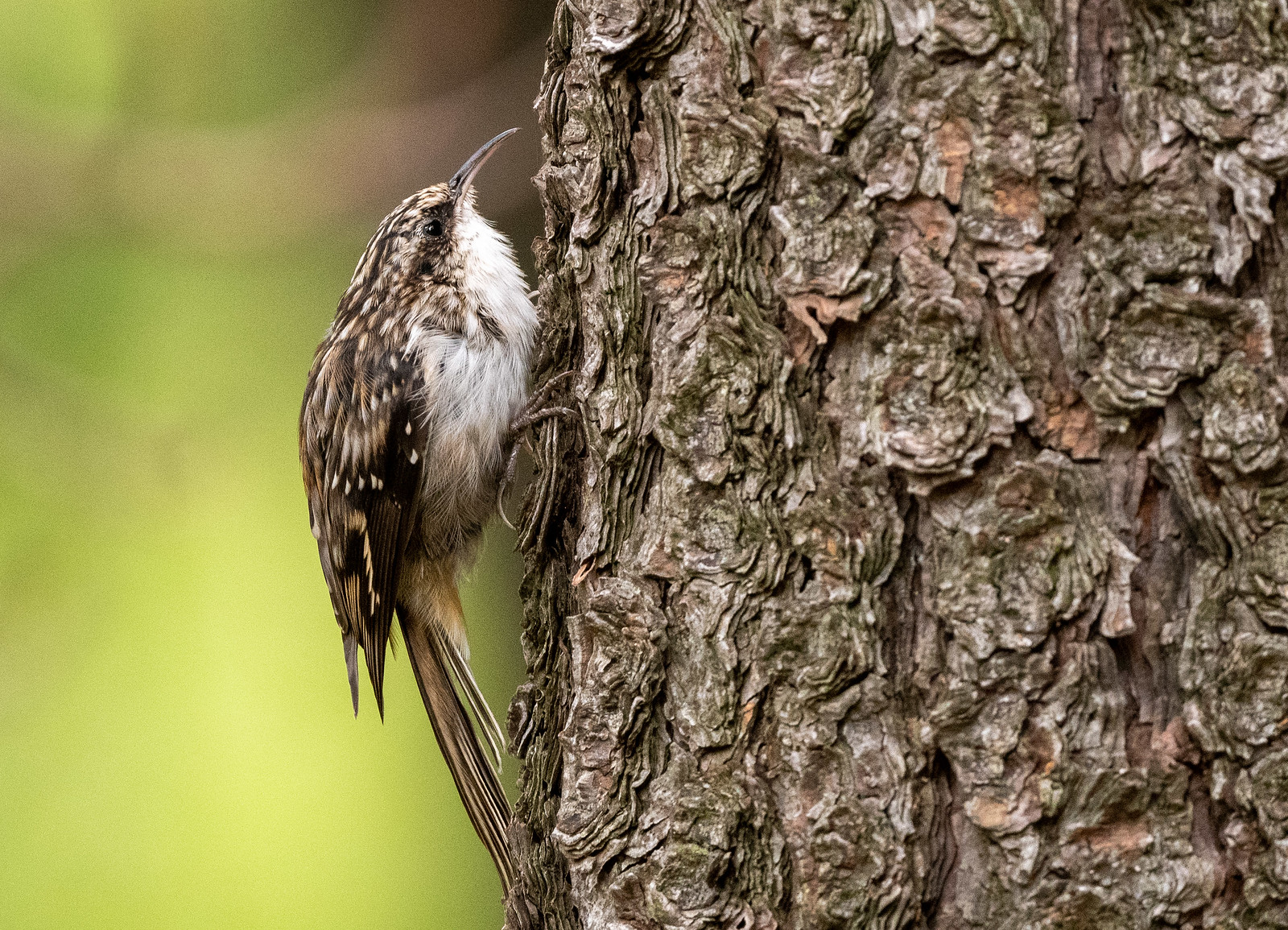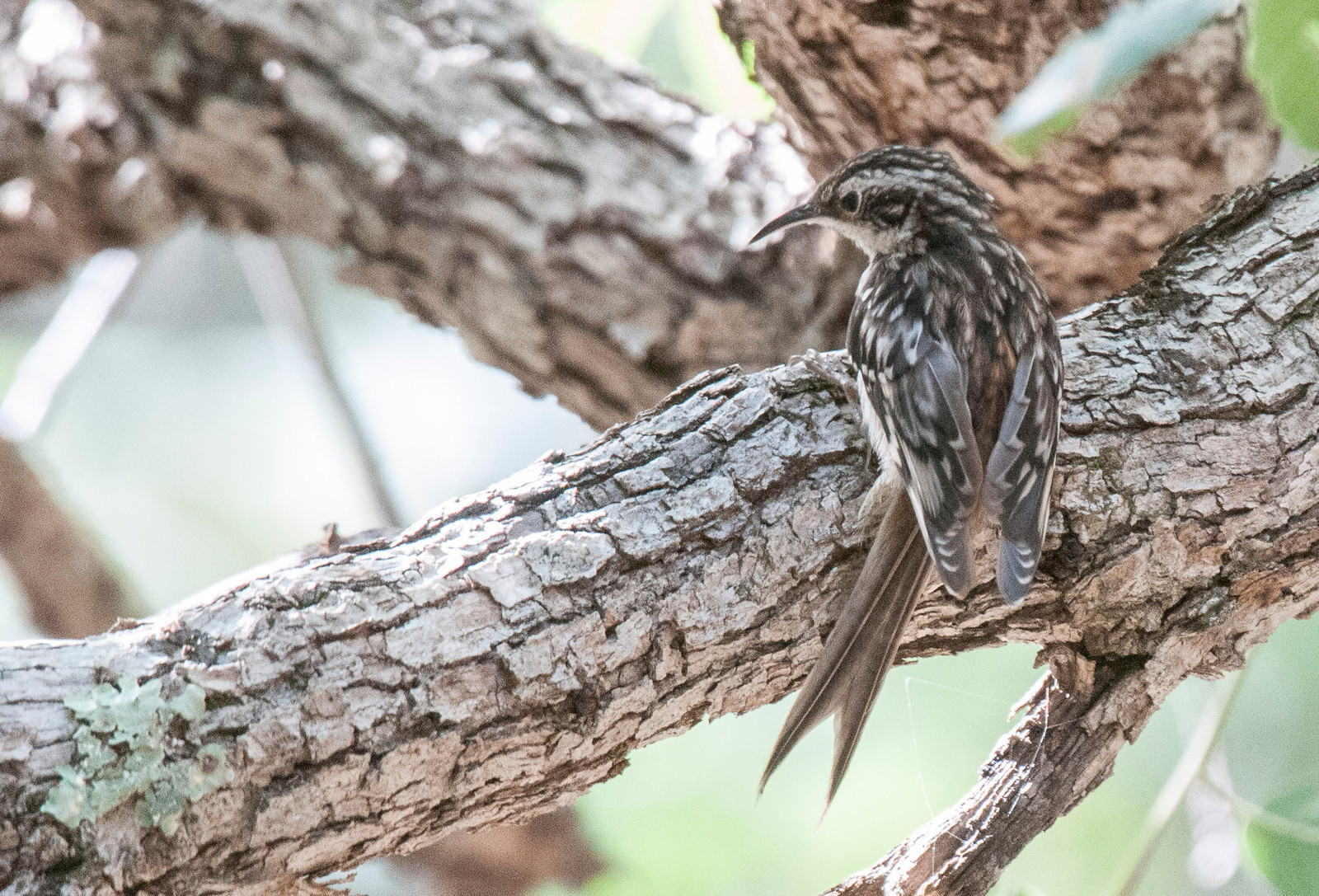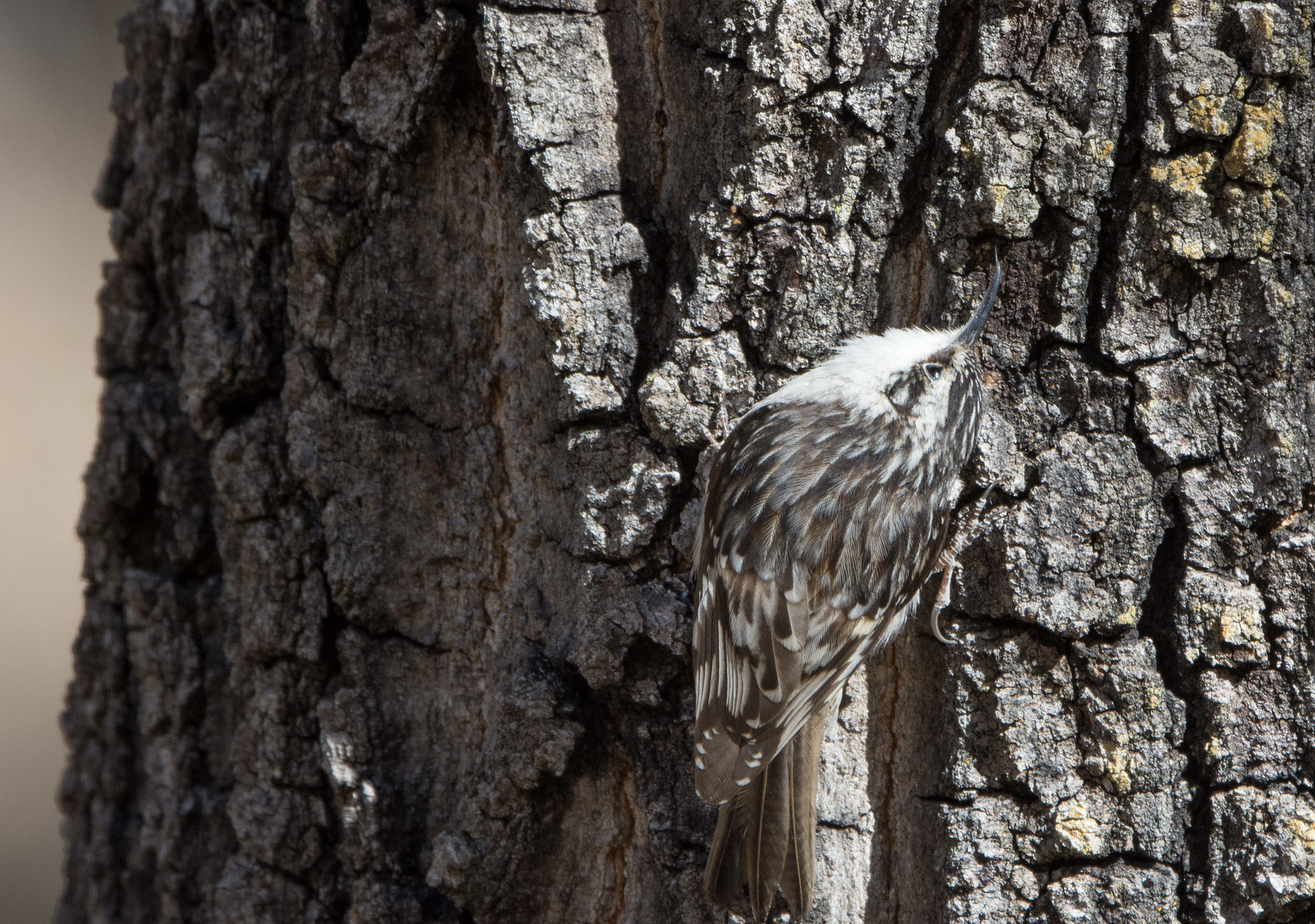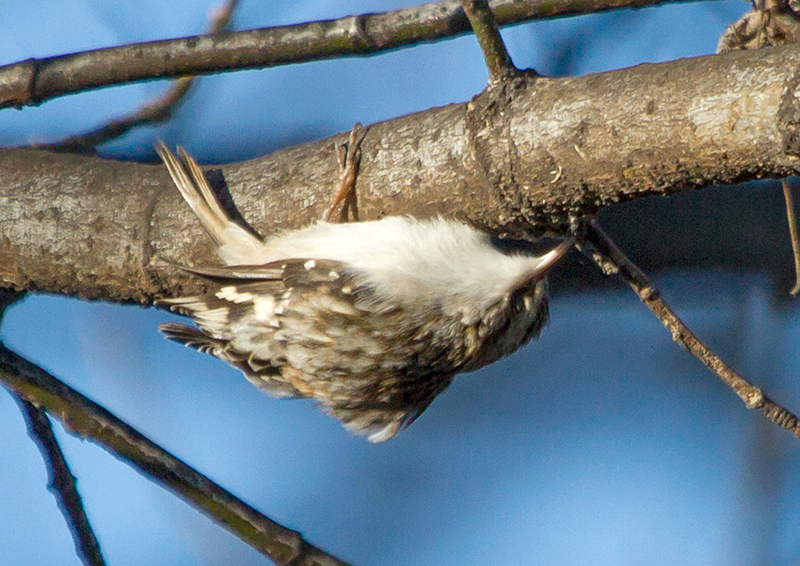| Early Spring Date: | March 2 |
| Late Spring Date: | April 24 |
| Best Dates to See in Spring: | March 20 - April 8 |
Spring: Brown Creepers are winter residents at Monticello Park who leave in the spring. They are not common at Monticello, and the best time to look for them is at the end of March and the beginning of April. They nest in Canada, the northern United States, and the Appalachian Mountains.
Fall: During fall migration, Brown Creepers begin to arrive at Monticello around the middle of September. In some years, fewer than 10 fall sightings have occurred, while other years have had more than 30 fall sightings. The best time to look for them is after October 11.
Where to See Them in the Park
Brown Creepers can be seen anywhere in the park where there are large trees.
Physical Description

Brown Creepers are small birds with a brown back and light underparts. They are about the size of a warbler. The sexes are similar. Creepers and the woodpeckers spiral up the trunk, while nuthatches spiral downward.

Creepers have a thin curved bill. Rather than having long central tail feathers like woodpeckers to help them anchor on a tree trunk, creepers have a forked tail like some swallows. The two points of the fork give them more stability when up against a tree or branch.

Brown Creepers have a streaked back that provides effective camouflage against the trunk of a tree, so finding a creeper can be difficult.

They can be acrobatic when foraging, twisting and turning to find insects in the trunks of trees.
Vocalizations
Brown Creepers do not to vocalize often, and you often see them before you hear them. Their song is high-pitched and has 5 or 6 notes.
Hear the vocalizations of the Brown Creeper.Notes
The name of the Brown Creepers who visit Monticello might change. They would be called Nearctic Creepers, while others in Mexico who are now considered part of the same species would be called Mexican (or Neotropical) Brown Creepers. The Mexican population might be distinct enough to be a separate species. Brown Creepers used to be considered part of the same species as a Eurasian species now called the Eurasian Treecreeper, which is why some ornithologists used to call them American Treecreepers.
Origin of Names
Common Name: Brown from the plumage. Creeper from the foraging behavior.
Genus Name: Certhia means creeper.
Species Name: Americana means of America, to distinguish them from the Eurasian creepers.
Brown Creeper video footage
Return to the Index
